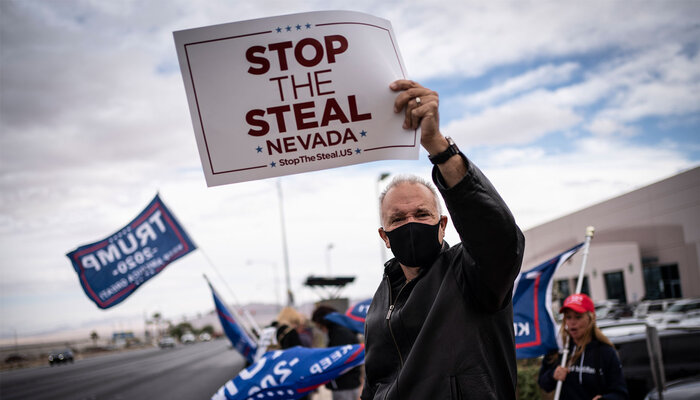Voters in Ohio have the right to vote free from intimidation under federal and state law.footnote1_7O3oBFuN7QuPlicalIOcT6ATKXkmY8SXGi4LUkrWA0Y_piNmSlO0Vm381 See, e.g., 18 U.S.C. §§ 241, 594; 52 U.S.C. § 10101(b); Ohio Rev. Code Ann. §§ 3501.35, 3501.90, 3599.01, 3599.24, 3599.26. Federal law broadly prohibits intimidation, threats, or coercion throughout every stage of the election process;footnote2_QY2dUiYlF4pPLu3rzJo7Dn6zjiQ5N6UWuUWFNXebnLM_ss8ZmGA7fRaf2 See U.S. Department of Justice, Voting Rights Fact Sheet (Sept. 2024), https://www.justice.gov/crt/media/1366636/dl (summarizing federal laws that protect against intimidation). more information on the federal protections that apply to all states can be found here. In addition, the following actions are specifically prohibited by Ohio law:
- Obstructing access to a polling location.footnote3_QJ0JqsftxPjjfQ080U1GCoRzdafNhkskbrgir2lkEc_i1zn02C09BwB3 Ohio Rev. Code Ann. §§ 3501.90(A)(1)(A), 3501.35(A)(2).
- Obstructing, intimidating, or interfering with voting at a polling location.footnote4_IQL2NfaEwiMn0ikXwz8yvfVvXslBXrKjtg8V0rwpU_sDRoYqp9Xah64 Ohio Rev. Code Ann. § 3501.90(A)(1)(A).
- Participating in a riot, violence, or disorder in and about a polling location.footnote5_IQL2NfaEwiMn0ikXwz8yvfVvXslBXrKjtg8V0rwpU_yjxVCjT01jU65 Ohio Rev. Code Ann. § 3501.90(A)(1)(A).
- Attempting by intimidation, coercion, or other unlawful means to induce a voter to vote or refrain from voting, or to vote or refrain from voting for a particular candidate, question, or issue.footnote6_H3RAifYiWsHHuaCF15xhHzBJg1uMn45r-OTqKQ2R5E_j727n3OnHLhX6 Ohio Rev. Code Ann. § 3599.01(2).
- Loitering in or about a polling place during the casting and counting of ballots so as to hinder, delay, or interfere with the conduct of an election.footnote7_onUVbKyxYSwx-2eUtdhxgYmyj7SpPaOPGm7OZDLdN8_tbenUXGu65FL7 Ohio Rev. Code Ann. § 3599.24(5).
- Soliciting or in any manner attempting to influence any voter in casting their ballot.footnote8_iwYjGTF6sMgWReJZ5BUlaPsmVZhDn4vCfHef5hxw9s0_uljiRaBlx8yF8 Ohio Rev. Code Ann. § 3501.35(A)(5).
- Engaging in any kind of election campaigning within 100 feet of a polling place, and if the line for voting extends beyond the 100-foot buffer, within 10 feet of any voter waiting in the line for voting.footnote9_u3zgOl7Z3SKcPxSdaISDmUoksLCZtQtTKMbV0fHVjBs_oyZqYfteo1iX9 Ohio Rev. Code Ann. § 3501.35(A)(1).
- Unduly delaying or hindering a voter from attempting to vote or voting.footnote10_F2e2XEtnOxftgroM9EI3VNWHJ3MwCB-wUJ5gNGEl9c_dK5VXFXApj3t10 Ohio Rev. Code Ann. § 3599.26.
- Recklessly destroying any property used to conduct elections or removing materials that help a voter cast their ballot.footnote11_gCO0bYsRWRY0DRUngoMs5kjHnEFZXpKSlEDvvMNjhc_b7pm922lgeWp11 Ohio Rev. Code Ann. § 3599.24(2), (6).
The below addresses the laws that serve as guardrails against specific threats of intimidation.
End Notes
-
footnote1_7O3oBFuN7QuPlicalIOcT6ATKXkmY8SXGi4LUkrWA0Y_piNmSlO0Vm38
1
See, e.g., 18 U.S.C. §§ 241, 594; 52 U.S.C. § 10101(b); Ohio Rev. Code Ann. §§ 3501.35, 3501.90, 3599.01, 3599.24, 3599.26. -
footnote2_QY2dUiYlF4pPLu3rzJo7Dn6zjiQ5N6UWuUWFNXebnLM_ss8ZmGA7fRaf
2
See U.S. Department of Justice, Voting Rights Fact Sheet (Sept. 2024), https://www.justice.gov/crt/media/1366636/dl (summarizing federal laws that protect against intimidation).
-
footnote3_QJ0JqsftxPjjfQ080U1GCoRzdafNhkskbrgir2lkEc_i1zn02C09BwB
3
Ohio Rev. Code Ann. §§ 3501.90(A)(1)(A), 3501.35(A)(2). -
footnote4_IQL2NfaEwiMn0ikXwz8yvfVvXslBXrKjtg8V0rwpU_sDRoYqp9Xah6
4
Ohio Rev. Code Ann. § 3501.90(A)(1)(A). -
footnote5_IQL2NfaEwiMn0ikXwz8yvfVvXslBXrKjtg8V0rwpU_yjxVCjT01jU6
5
Ohio Rev. Code Ann. § 3501.90(A)(1)(A). -
footnote6_H3RAifYiWsHHuaCF15xhHzBJg1uMn45r-OTqKQ2R5E_j727n3OnHLhX
6
Ohio Rev. Code Ann. § 3599.01(2). -
footnote7_onUVbKyxYSwx-2eUtdhxgYmyj7SpPaOPGm7OZDLdN8_tbenUXGu65FL
7
Ohio Rev. Code Ann. § 3599.24(5). -
footnote8_iwYjGTF6sMgWReJZ5BUlaPsmVZhDn4vCfHef5hxw9s0_uljiRaBlx8yF
8
Ohio Rev. Code Ann. § 3501.35(A)(5). -
footnote9_u3zgOl7Z3SKcPxSdaISDmUoksLCZtQtTKMbV0fHVjBs_oyZqYfteo1iX
9
Ohio Rev. Code Ann. § 3501.35(A)(1). -
footnote10_F2e2XEtnOxftgroM9EI3VNWHJ3MwCB-wUJ5gNGEl9c_dK5VXFXApj3t
10
Ohio Rev. Code Ann. § 3599.26. -
footnote11_gCO0bYsRWRY0DRUngoMs5kjHnEFZXpKSlEDvvMNjhc_b7pm922lgeWp
11
Ohio Rev. Code Ann. § 3599.24(2), (6).



